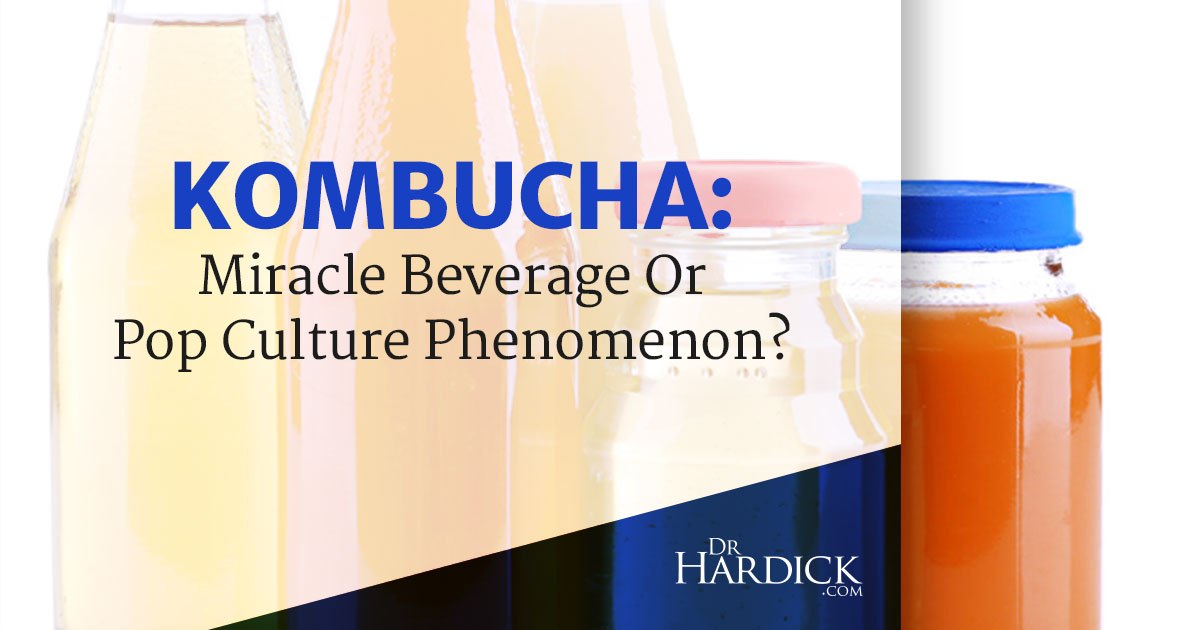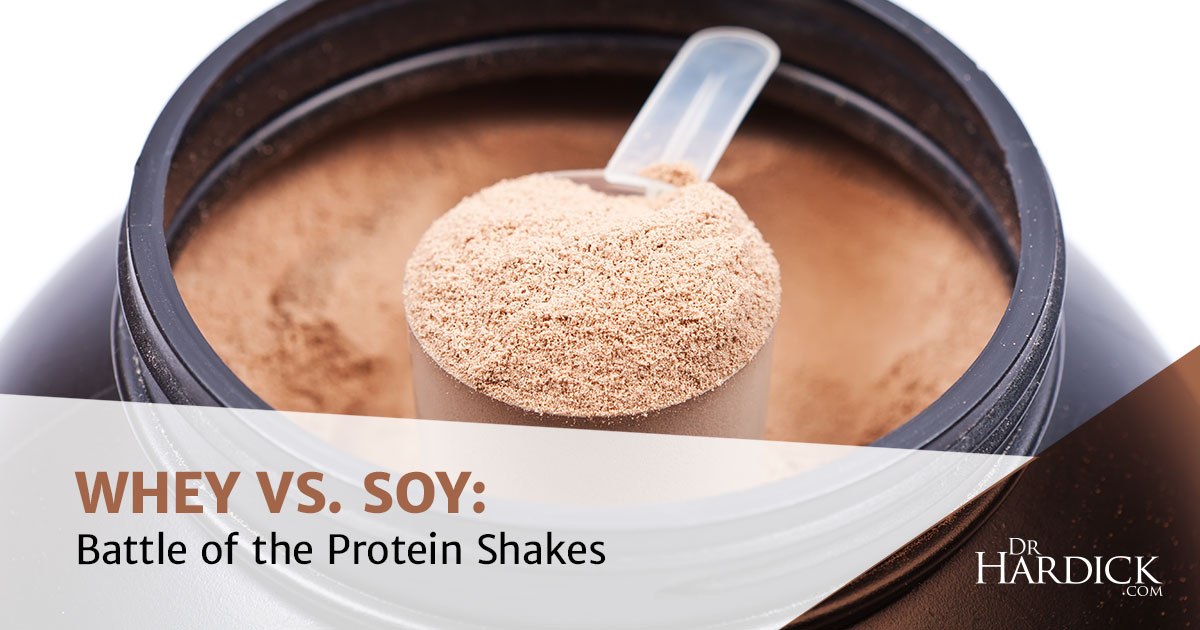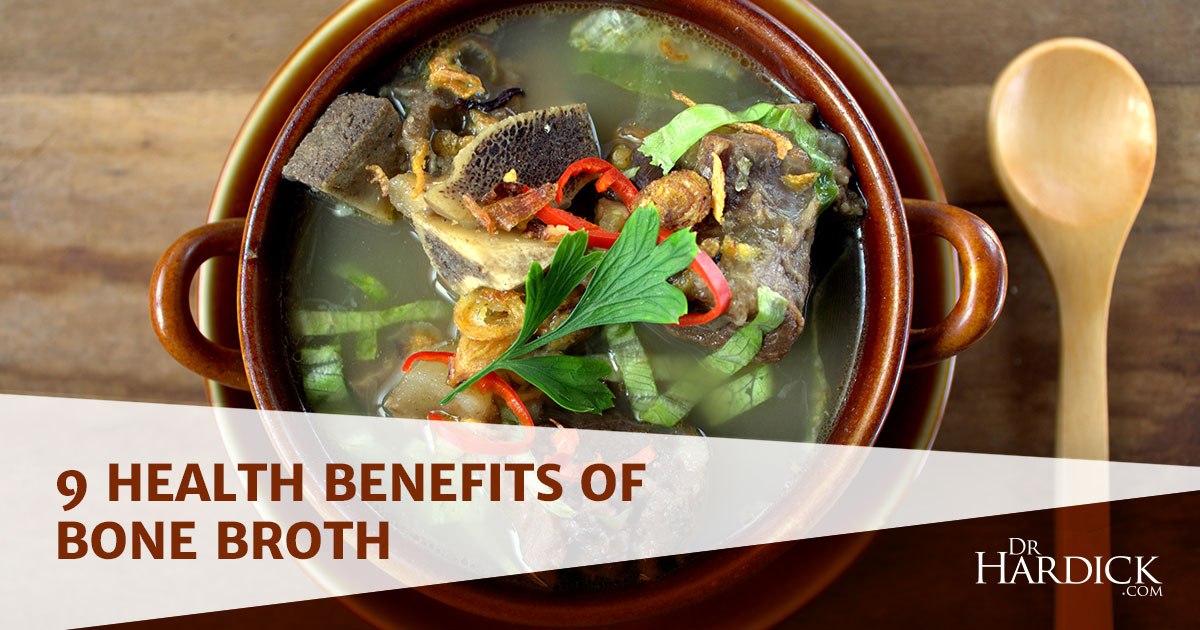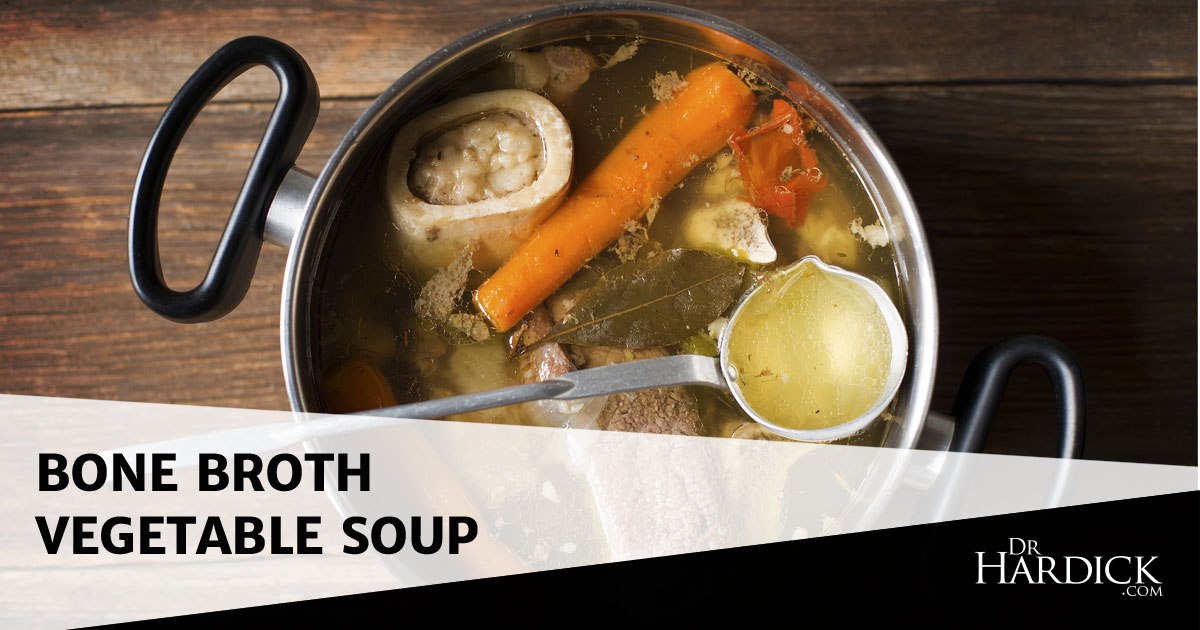
Is it time to wipe off that health halo? Every year, media outlets and so-called experts find a new “super food” (or “super drink”) they enthusiastically endorse as the greatest thing ever. Like, you’ve got to rush out right this minute and buy it in bulk because all kinds of amazing things will happen.
“12 ‘superfoods’ you should be eating,” a 2013 Harvard Women’s Health Watch study title blared. “Want to improve your health and prevent disease? Incorporate these nutrition-packed foods into your diet.” (1) In case you were wondering, the usual suspects made the list including wild salmon and dark chocolate, but my point is experts love making these lists.
Here’s how the hype machine begins, in no particular order. Magazine writers, desperate to get you to pick up their publication at the grocery stand, salaciously describe the amazing qualities of this “perfect” food or drink. Nutritionists and other health experts are all too happy to weigh in for publicity.
Click-bait bloggers jump on the bandwagon, and suddenly your social media feed becomes inundated about how this “miracle” can help you burn fat or reduce your risk for cancer or any other disease or have the most amazing sex ever.
Before long, you’ve got three bestsellers – at least one with “miracle” in its title – apotheosizing this “perfect” food or drink to lose weight, reverse disease, boost your sex drive, and deliver all sorts of other amazingness.
Remember quinoa a few years ago? Mainstream media and big food companies usurped this perfectly fine seed (often confused as a grain). Just to be clear: Quinoa is a healthy food, although maybe not the perfect food; quinoa chips and the loads other Frankenfoods the quinoa frenzy spawned are decidedly not.
Kale makes another great example. While perfectly healthy and loaded with nutrients, this leafy green earned its glory, though ounce for ounce other greens like arugula hold more weight. Really, any dark-color green comes loaded with antioxidants and nutrients.
But generalizing or telling people to eat a variety of nutrient-rich foods doesn’t sound sexy or sell books. No, you’ve got to pick one food and overhype the hell out of it till people get sick of hearing about it.
Inevitably, a backlash eventually results, and in the end, we all calm down and see it for what it is: A perfectly healthy food that fits into a well-designed diet and lifestyle plan.
I’ve chosen 7 Superfoods that fall into the overhyped, healthy-with-some-caveats category. While debatably none reached the fervor of kale or quinoa, they frequently earn a health halo among overzealous experts and consumers all too eager to buy into the feeding frenzy.
1. Red Wine
What are Red Wine’s health benefits?
“Red wine is antioxidant rich, loaded with healthy polyphenols, and a major dietary source of the anticancer, antiaging compound resveratrol,” writes Dr. Jonny Bowden in The 150 Healthiest Foods on Earth. Red wine contains various amounts of anti-inflammatory, anti-aging resveratrol depending on variety, region, and type. (2)
Among its purported benefits, resveratrol and other nutrients (that likely work synergistically) in red wine and various other foods like grapes can increase HDL levels (your so-called good cholesterol), decrease platelet aggregation, and improve blood vessel function, decreasing your risk for cardiovascular disease. (3)
Why is Red Wine overrated?
Bowden goes on to discuss the dark side of this beloved drink:
“[W]ine—and alcohol in general—is one of those substances where…the dosage makes the poison,” he writes. “Moderate intake of red wine: good. Too much alcohol, especially for those with addictive personalities: unmitigated disaster. Alcohol can raise triglycerides, increase blood pressure, and lead to weight gain. And it’s not possible to predict in which people alcohol will lead to alcoholism.”
That’s not all. Over drinking wine or other alcohol can trigger or exacerbate inflammation, liver toxicity, and heart disease. (4)
Talk about its health benefits all you want, but most people drink red wine because a few glasses help them feel relaxed, maybe a little tipsy, or socially a little less awkward. Unlike most types of alcohol, red wine carries a feel-good glow that makes tossing back a few glasses more socially acceptable, even among us health experts.
But back to those benefits: To get therapeutic amounts of the anti-aging antioxidant resveratrol that become red wine’s health-selling point, you’ll have to drink upwards of 1,000 glasses. Please don’t do that.
Perspective: One glass of wine contains anywhere from 0.2 to 0.5 mg in a 5-ounce serving, depending on things like region and grapes. (5) [If you’re curious: Cabernet sauvignon had the highest levels of resveratrol with about 9.3 mg in a bottle.] Most studies that look at resveratrol’s therapeutic benefits, on the other hand, use multiple 500-mg supplements daily. (6)
One study found among elderly people who drank red wine daily, only those who were more health-conscious otherwise enjoyed its anti-inflammatory, antioxidant, and other health benefits. (7) In other words, they weren’t just tossing back a few glasses of cabernet, staying sedentary, and diving into cheeseburgers. They used wine as a part of a healthy life.
I’ve seen that repeatedly among my health-conscious friends. Many wine drinkers I know opt for a glass of pinot noir instead of dessert. In other words, that glass of red can help them make a better, less-sugar-loaded way to end their meals.
How can you get Red Wine’s benefits without the hype?
Quality matters tremendously. (You’ll hear that word a lot here.) Cheaply produced wine, such as non-organic wines with sulfates, (8) hasn’t been optimally fermented (that takes time, which costs money), yielding more sugar in that glass of red.
Opt instead for a quality red from a reputable vendor, and remember quantity matters too. Aim for a glass or two, with a glass constituting a five-to-six-ounce pour. Yes, some glasses can hold a lot of wine, so don’t fool yourself into pouring half the bottle into a glass and thinking that’s one glass.
To really get resveratrol’s therapeutic benefits, you’ll want to supplement. You might also consider a grapeseed extract or other polyphenol-rich supplement.
And if you don’t drink, please don’t start just to get resveratrol or other health benefits. There are far more efficient ways to get those nutrients (plenty of foods like berries have resveratrol), and especially if you overdo it, wine’s drawbacks far outweigh any benefits.
2. Apple cider vinegar
What are Apple cider vinegar’s benefits?
A powerhouse of polyphenols and other nutrients, apple cider vinegar has been used for medicinal purposes since ancient times. “The best known of the vinegars in natural health circles is the kind made from apples,” says Bowden.
He goes on to provide a short, intriguing history lesson.
“Hippocrates, the father of medicine, thought of it as a powerful elixir and a naturally occurring antibiotic and antiseptic that fights germs,” Bowden write.“ Ancient Egyptians, Romans, and Greeks used it. And apple cider vinegar is mentioned in the Bible as an antiseptic and healing agent. Even Columbus had barrels of vinegar on his ships for the prevention of scurvy. Indeed, apple cider vinegar has been used for thousands of years, as both a health and a cleansing agent.”
Take its antibacterial properties, which makes apple cider vinegar ideal for sores, wounds, and ulcerations. Jelly fish sting during your Maui vacation? Apply some vinegar. Ditto for treating lice, nail fungus, and warts. (9)
Problem is, little science substantiates these health claims. Research shows for “more than 2000 years, vinegar has been used to flavor and preserve foods, heal wounds, fight infections, clean surfaces, and manage diabetes, researchers note, yet “much scrutiny surrounds its medicinal use.” (9)
Research does, however, substantiate its benefits for Type 2 diabetes and other conditions. Studies show apple cider vinegar can significantly improve insulin sensitivity for people with insulin resistance. (10) Another found apple cider vinegar helps slow stomach emptying, helping maintain healthy insulin levels. (11)
Others show anti-tumor benefits. Apple cider vinegar can help kill cancer cells in leukemia and colon cancer. (9)
It might even nudge the scales favorably. One recent study found body weight, body mass index (BMI), visceral fat, waist circumference, and serum triglyceride levels were significantly lower for those who used apple cider vinegar daily compared with the placebo group. (12)
Why is Apple cider vinegar overrated?
As with most perfectly-healthy-in-moderation things, some people overhype apple cider vinegar’s health benefits. You can’t just suck down half a bottle of this throughout the day and watch those pounds magically disappear or reverse Type 2 diabetes.
Most stuff you find in grocery stores is also poor quality. One study among apple cider vinegar found a significant amount of variation among brands and pH content; eight different supplements were tested and results showed that all health claims made on the labels were completely unsubstantiated. (13)
Processing kills its active constituents. In other words, quality matters; not all apple cider vinegars are created equal. Cheaply made or highly processed vinegars contain little or no anti-microbial, anti-fungal, or anti-cancer benefits compared with the raw, organic, fermented stuff.
How can you get Apple cider vinegar’s benefits without the hype?
While not an all-encompassing miracle cure, apple cider vinegar has its benefits. Just because something doesn’t carry copious double-blind, placebo-based studies to support their use or efficacy doesn’t mean that food or drink isn’t perfectly legitimate. After all, who’s going to fund a long-term apple cider vinegar study?
If you use it, more is not better. One rodent study found after four weeks, rats gained weight, liver enzymes increased, and mucosal changes occurred inside the gastrointestinal tract. Keep in mind these rats were fed mega-doses compared to their body weight. (14)
Skip the processed, pasteurized, essentially ‘dead’ products. Pasteurization kills off good and bad stuff. One study compared conventionally pasteurized apple cider vinegar with a raw, organic product. Raw had more polyphenolic compounds, enzymatic strains, and acetic acid. (15)
If you struggle with indigestion or acid reflux, want to boost your immune system, or need to maintain healthy insulin levels, you would probably benefit from a few daily tablespoons of raw, unfiltered, organic apple cider vinegar. Just don’t think doing so will magically cure all your health woes.
3. Kefir
What are Kefir’s health benefits?
A fermented milk drink sometimes called “drinkable yogurt,” the Linus Pauling Micronutrient Institute calls plain kefir a functional food. (16)
Live, active cultures in fermented foods like kefir – called probiotics – benefit gut health, yet pasteurization and processing kill many of these beneficial live cultures, essentially yielding a dead food often loaded with added sugars and additives.
Besides, the amount of healthy bacteria that actually survives your digestive tract hinges on several factors including number of organisms present, pH, temperature, sugar content (that may reduce absorbability), and how well you absorb nutrients based on things like age and gut health. (17)
In other words, if you’re in your 60s and have leaky gut you’re not going to benefit from kefir’s healthy bacteria like a healthy 20-something would.
Beyond that, regular eating quality kefir can provide numerous benefits including improving digestion, normalizing cholesterol levels, controlling blood sugar, lowering blood pressure, decreasing inflammation, increasing antioxidants, and lowering your risk for cancer. (18)
Why is Kefir overrated?
Kefir has an acquired taste. Riding on its health glow manufacturers add sweeteners, flavors, and other taste-enhancing boosters to commercial kefir products. Fruit-flavored kefirs usually have added sugar, (19) essentially making them dessert in a bottle.
Other culprits that rob live enzymes and destroy kefir’s health-providing abilities include time, preservatives, and type of pasteurization used. While a short pasteurization time can boost shelf life, higher temperatures could lower its overall nutrient content. (20)
Many people with intolerances do fine with fermented foods, but be aware kefir is still dairy with all its potential problems.
How can you get Kefir’s benefits without the hype?
The amount of healthy bacteria that survive in kefir will depend on many factors including processing methods, overall quality, and how long it sat on your grocer’s shelf. To get those probiotics, you’ll want to eat a variety of fermented foods (not just kefir) and probably also take a quality probiotic supplement.
Coconut kefir might be a better alternative for very dairy-sensitive folks. One animal study found a high-fat, low calcium diet (using coconut milk infused with Bifidobacterium) lowered some inflammatory markers over eight weeks. (21)
If you can tolerate dairy, quality matters. Kefir is only be as healthy as the animal that it comes from. Processing in the U.S. today emphasizes quantity over quality, mass production, and maximum efficiency. (22)
Look for a low-sugar, minimally processed brand from milk that comes from grass-fed cows. (Even the so-called healthy coconut ones sometimes contain added sugar.) And opt for full-fat varieties, which provide a better array of fatty acids and are less likely to contain added sugars compared with low-fat or fat-free kefirs. (23)
4. Kombucha
What are Kombucha’s health benefits?
Although it’s the hipster-happening “new” drink, kombucha has been around thousands of years, and researchers estimated American sales around $600 million for 2016, with projections for 25 percent annual growth. (24)
Among its health benefits, fermented tea contains friendly bacteria and live beneficial cultures. Researchers note four distinct benefits: Detoxification, antioxidation, energizing potencies, and improved immunity. (25)
Fermented, of course, means kombucha contains probiotics including strains like lactobacillus and zygosaccharomyces. (26) One popular brand also boasts among its nutrients several B vitamins, antioxidants like epigallocatechin gallate (EGCG; the same polyphenol in green tea), and several probiotic strains.
Why is Kombucha overrated?
“Many personal experiences and testimonials of [kombucha tea] KT drinkers are available throughout the world on the ability of KT to protect against a vast number of metabolic and infectious diseases, but very little scientific evidence is available that validates the beneficial effects of KT,” researchers notes. (25)
Likewise, one systematic review concluded “the largely undetermined benefits do not outweigh the documented risks of kombucha.” (27)
I like celebrity nutrition and fitness expert JJ Virgin’s response.
“What irritates me is how kombucha became positioned as a cure-all for everything from boosting libido to healing cancer and diabetes,” she writes. “These claims are unsubstantiated, and I found no human trials showing kombucha’s benefits.” (28)
There is no standardized process for making kombucha, and the wrong strains cultivated during the fermentation process could lead to food poisoning. (29) Fermentation could also produce excessive acid formation, creating lactic acidosis. (29) Researchers also find bad strains could create jaundice, nausea, vomiting, and full-blown allergic reactions that stopped in most subjects when they ditched kombucha. (30)
In other words, if you get a bad batch – whether from a popular brand at Whole Foods or something your friend whipped up in her kitchen – you’re not in for a fun evening.
Even after fermentation, some commercial kombucha drinks often have too much sugar. Read those labels for things like expiration date and sugar amounts.
Worth noting: Fermentation yields a small amount of alcohol (by some estimates, anywhere from .5 percent up to five percent), forcing some kombucha brands to prohibit sales to minors. (24) You’re unlikely to get anywhere near drunk on it, but it does contain some alcohol (and you might get carded for buying it, depending on variety). (31)
How can you get Kombucha’s benefits without the hype?
Probiotics and other health benefits aside, let’s face it: Most people drink kombucha because it tastes good. If you’re plunking down four or five bucks a bottle, look for a quality product that contains live active cultures and low amounts of sugar. There are worse ways to spend your money, but kombucha could quickly become an expensive habit.
You might make kombucha yourself, but be aware of “bad batch” and other potential issues. If you go the DIY, look for a quality starter kit and closely follow directions.
5. Whey
What are Whey’s health benefits?
“The benefits of whey have been known for centuries,” writes Bowden. “Thanks to journalist and health reporter Will Brink, I found this wonderful aphorism dating from about 1777 that says the following: ‘If everyone were raised on whey, doctors would be bankrupt.”
That might be a slight exaggeration, but whey does have health benefits. Among them include the amino acids that help build your master antioxidant, glutathione. (32)
“Whey protein powder has been found to be one of the richest sources of these glutathione ‘building blocks,’” writes Bowden. He notes whey also contains other immune-boosting proteins like beta-lactoglobulin, alpha-lactalbumin, and immunoglobulins.
Especially among some fitness folks, whey is a superior protein source because it contains an impressive array of highly bioavailable amino acids, especially the branched-chain amino acids (BCAAs) leucine, isoleucine, and valine. (33)
Why is Whey overrated?
Bodybuilders have usurped its health glow, and today you’re more likely to find cheaply produced whey in hulking tubs in megastores. After soy protein isolate, whey might be the junkiest protein powder on the market.
Many commercial whey powders contain additives and junk ingredients like added sugar and artificial sweeteners. Ingredients in one popular brand (I just randomly picked one) include maltodextrin (corn), artificial flavors, and several artificial sweeteners.
High-heat processing can also denature (or damage) whey’s amino acids.(34) And whey can be insulinogenicn (35), potentially making it ideal for bodybuilders and other athletes but not so much for people wanting to lose weight.
While whey might be a superior protein source because it absorbs very quickly (ideal for bodybuilders), as a meal replacement it becomes a disaster because you’ll most likely find that you’re still hungry.
How can you get Whey’s benefits without the hype?
Why are you using whey? If you’re an athlete, you might get better results supplementing with BCAAs. If you’re using protein powder as a meal replacement, you’re better off choosing a more slowly absorbable powder like pea-rice protein.
If you do choose whey (and it’s perfectly fine), quality matters. Look for whey that comes from cows fed grass that contains no added sugar or other junk ingredients. Professional quality is the way (whey?) to go here.
6. Coconut
What are Coconut’s health benefits?
“Let me be very clear at the outset: Coconut and coconut oil are superfoods,” writes Bowden. “Coconut—and its oil—is one of the most healthy, amazing things you can ingest.”
He’s not alone singings its praise for weight loss and lots more. “In the 1940s, when farmers wanted to fatten up their livestock, they gave them coconut oil,” writes Mark Hyman, MD, in Eat Fat, Get Thin. “This plan backfired. The animals lost weight and had more energy!”
For years, coconut got a bad rep because it’s mostly saturated fat. The American Heart Association (AHA) recently resurfaced the coconut-oil-will-kill-you theory. Stay tuned for my take on the AHA’s controversial position.
Studies show most “saturated fats in coconut are medium chain fatty acids whose properties and metabolism are different to those of animal origin,” researchers note. “Medium chain fatty acids…are directly used in the body to produce energy. They are not as ‘bad for health’ as saturated fats.” (36)
One study that compared MCT oil with olive oil as part of a weight-loss plan found MCT oil could help you lose weight. (37)
Furthermore, about half of the fat in coconut comes from lauric acid, which Bowden says your body converts into anti-viral, anti-bacterial monolaurin.
In other words, most of the saturated fat in coconut isn’t anything to worry about and actually bestows some health benefits.
Why is Coconut overrated?
Manufacturers know you know coconut is a superfood. Many coconut oils on the market are cheaply made, using high-heat and heavily processed that reduce its benefits.
Still, that might be the least of coconut-as-superfood’s many problems. Count the number of heavily processed coconut desserts that populate your health food store. Many come sweetened with agave, organic cane syrup, and other “healthy” sweeteners that pack as much if not more sugar than their “regular” version. Even commercial coconut milk sometimes contains added sugar and preservatives.
Worth noting too is that coconut water, which makes an excellent electrolyte-replenishment alternative to popular sports drinks (38), does not contain any fat and is mostly carbohydrates. While naturally sweet, many commercial brands add fructose or other sweetener to amplify taste.
How can you get Coconut’s benefits without the hype?
Extra-virgin coconut oil makes an excellent medium-heat cooking oil. Ditto coconut milk, coconut butter, and of course whole coconut. If you’re dairy intolerant, coconut milk makes a smart alternative, and no-sugar-added coconut milk “ice cream” can curb your sweet tooth without a sugar overload.
Just as with any processed product, though, read those labels. While it might be more trouble, buying full-fat organic canned coconut milk and watering it down becomes more cost-effective, healthier, and environmentally friendly than cartons, which are essentially watered-down coconut milk.
Any coconut water will contain some naturally occurring sugar, but read your labels and opt for one that only contains water with no fructose or other added sugars.
7. Bone Broth
What are Bone Broth’s health benefits?
Everything old is new again, as virtually any food or drink on this list proves. Your great-grandparents might have made bone broth, typically made with bones roasted first to improve flavor. Bone broths are typically simmered for eight to 24 hours (compare that with broth and stock, which are both simmered for much shorter time periods), creating gelatin from collagen-rich joints and releasing trace minerals from bones. (39)
Essentially, bone broth is a healthy mineral-and-amino-acid (depending on how you look at it) drink or food, but that doesn’t sell books. Happy to ramp up the hype, several respected experts have hopped on the bone-broth-cure-all bandwagon.
“Of all the foods I utilize for wellness, bone broth is easily the one that I would call the closest thing humanity has discovered to a panacea,” writes Ariane Resnick in The Bone Broth Miracle. “I have used it to aid my clients’ recoveries from leaky gut, SIBO [small intestinal bacterial overgrowth], celiac disease damage, Lyme disease, IBS [irritable bowel syndrome], sports injuries, and so much more.”
In her bestselling Dr. Kellyann’s Bone Broth Diet, Petrucci is equally fond of this elixir’s multitasking abilities for weight loss, reduced joint pain, detoxification, and gut healing. She notes bone broth contains the building blocks for collagen, which “blasts [italics hers] wrinkles, so you can take years off your face at the same time as you lose weight.”
Why is Bone Broth overrated?
While it maintained its health halo, bone broth has received a few swipes among professionals during recent years.
“In their book Nourishing Broth, authors Sally Fallon Morell and Kaayla T. Daniel assert that bone broth can help with a variety of ailments — from improving joint function and helping wounds heal faster, to modulating the immune system and rebuilding bones with collagen,” writes Amy Blaszyk for National Public Radio (NPR). “The problem is that there are precious few scientific studies of the specific healthful properties of bone broth. What’s more, there is no one bone broth recipe.” (40)
One potential problem is that bones can sequester the heavy metal lead, potentially contaminating broth.
“The preparation and consumption of bone broth is being increasingly recommended to patients, for example as part of the gut and psychology syndrome (GAPS) diet for autism, attention-deficit hyperactivity disorder, dyslexia, dyspraxia, depression and schizophrenia, and as part of the paleolithic diet,” researchers in one review note. “However, bones are known to sequester the heavy metal lead, contamination with which is widespread throughout the modern environment.” (41)
One small, blinded, controlled study of lead concentrations in three different types of organic chicken broth showed broths contain several times the lead concentration of the water with which the broth is made. Researchers recommended experts consider lead contamination when they recommend bone broth diets. (41)
Lead aside, despite its easy-and-done reputation making your own bone broth can be time-consuming.
“Everyone keeps telling me how easy it is to make bone broth, so I buy the surprisingly simple ingredients (onions, carrots, celery, thyme, canned tomatoes, garlic, etc.) on the way home from work, but neglect to read the instructions all the way through,” writes Meena Hart Duerson on Today.com. “After roasting the bones for half an hour and then simmering them with veggies, I realize around 11 p.m. that the recipe calls for me to leave the pot on the stove for a few hours or overnight to fully simmer. Broth all-nighter!” (42)
How can you get Bone Broth’s benefits without the hype?
“I think the real benefit of bone broth is that people are returning to the kitchen to prepare homemade, whole foods from scratch,” says Jennifer McGruther, author of The Nourished Kitchen. “There’s always benefits to cooking foods from home, and that’s exactly what we’re seeing with bone broth.” (40)
If simmering for hours doesn’t fit your schedule, you can find many pre-made broths online or at your local health food store. As always, read those ingredients. Thrive Market makes a good one with these simple ingredients: Beef Broth, Onion, Organic Celery, Organic Carrot, Organic Parsley, Sea Salt, Apple Cider Vinegar, Bay Leaf.
At $8.49 (compared with $11.99 retail) for two servings, it’s a bit pricy, and at just 35 calories a serving (it’s basically pure protein) unlikely to impact your appetite. (43)
In her book, Petrucci combines bone broth with intermittent fasting along with a well-designed diet and lifestyle plan.
In other words, just like any of these seven food and drinks, many of their benefits only occur combined with other modifications. While it won’t sell books or create click-bait blogs, choosing quality products and enjoying them in therapeutic moderate amounts become the key to get these benefits without the hype.
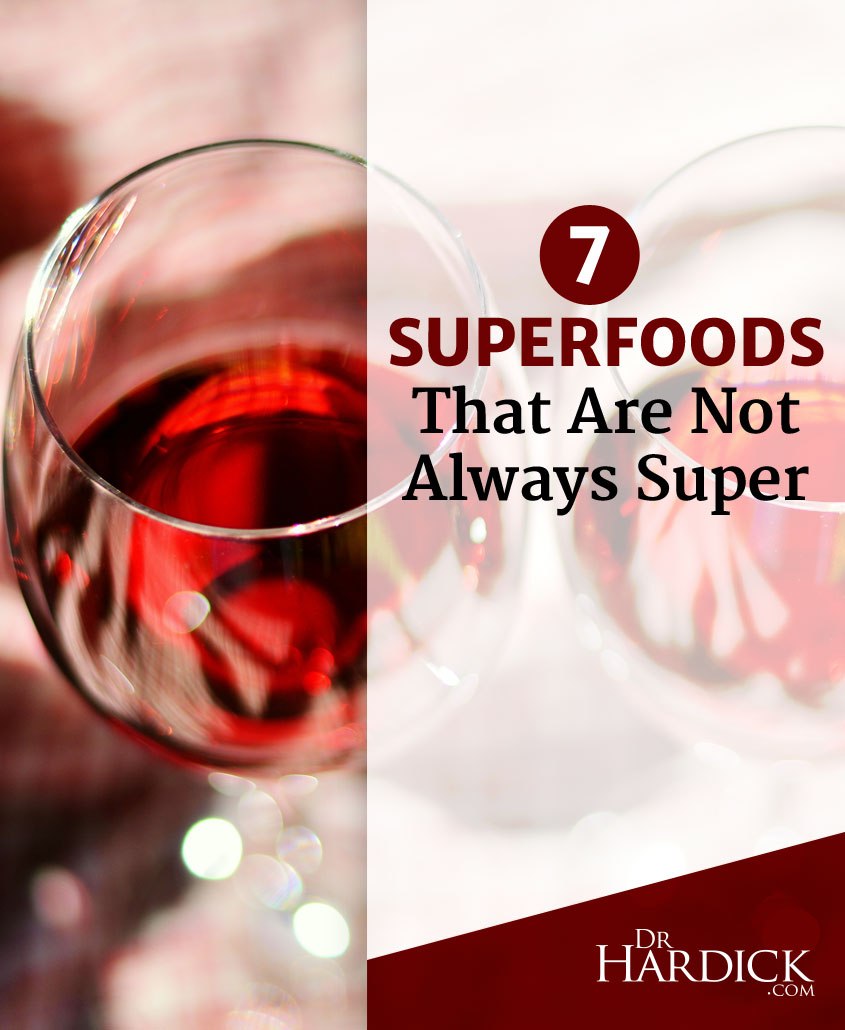
About Dr. B.J. Hardick
Raised in a holistic family, Dr. B.J. Hardick is the co-author of the best-selling Maximized Living Nutrition Plans, used in natural health clinics worldwide, and a contributing author for its follow-up publication, The Cancer Killers. Dr. Hardick shares his own journey dealing with heavy metal toxicity in Real Detox, his e-Book available on DrHardick.com. An organic food fanatic and green living aficionado, all Dr. Hardick’s passions are anchored in helping others achieve ecologically sound, healthy, and balanced lives. Learn More



